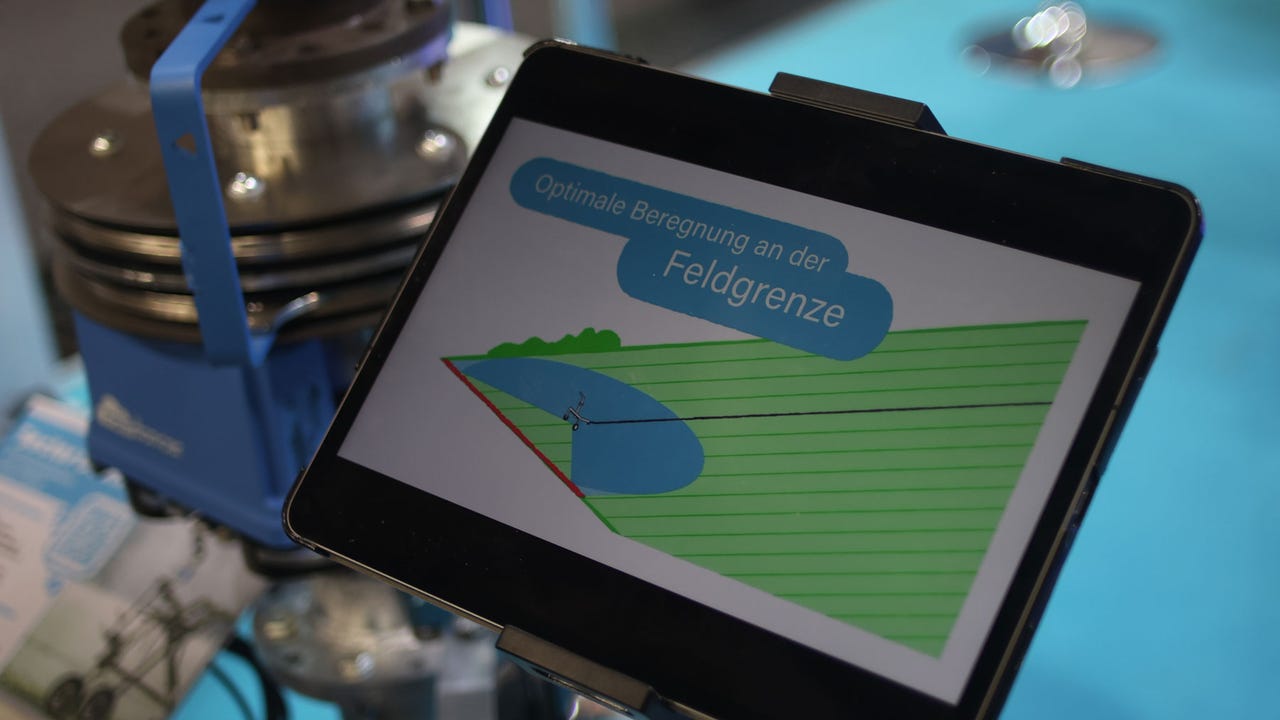Germany’s biennial Agritechnica brings together Europe’s largest irrigation brands. Compared to North America’s sprawling acreage, many of which feature center pivots, Europe’s smaller specialty crop operations approach irrigation differently. Hose reels and drip irrigation dominated building eight at this year’s show. The cultural difference was just as stark.
“It’s an Italian company. We start with coffee,” says Andrea Baiguini, who was representing Irrimec at Agritechnica 2025. Among other irrigation products, Irrimec manufactures hose reels and pumps. He disappears into a room to brew a small but strong cup of black coffee.

In some ways, irrigating is different here. Farms across Europe are old. Farmland is fractured. It can be difficult not to waste water because fields are irregularly shaped, and farmers must shuttle equipment between multisite operations.
Margins are extremely thin, and high value crops require careful attention to maximize profit. Apart from broad acreage farmers, many farmers rely on hose reels instead of center pivots because they’re more easily moved from field to field.
“You must make the most out of every single square foot because you have small surface area,” Baiguini explains. In other ways, it’s similar.
Irrigation challenges
Like the United States, European farmers must create regular reports and stay within specific water allotments through the European Union’s Common Agricultural Policy and local mandates. It can be a complex system to navigate, designed to monitor irrigation usage. Frank Duehnelt, CEO and co-founder of Berlin-based irrigation brand Raindancer, says regions in Southern Europe are particularly water-constrained.
“In some areas, water is a very limited resource. That’s why the government only allows a certain amount of water [for irrigation],” he says.
Lukas Kordos, a European representative for Nebraska-based T-L Irrigation, expands on this. He says some regions in Europe experience increasingly extended droughts interspaced with deluge.
“They’re irrigating to try to beat the drought period,” he says. Like American farmers, digital irrigation management is one key way they’re beating drought through efficiency. “Farmers want to have everything on their phones to monitor and control remotely.”
Tech adoption
But while government restrictions and changing weather patterns incentivize irrigation efficiency, German Martos, Lindsay’s sales director for Europe and the Middle East, says European farmers have a long ways to go. They lag behind American farmers in tech adoption.
Despite many incentives, “[Europe] is still behind North America. The number of innovators — early adopters — versus those that follow, are behind,” he says. But that’s changing. Data is driving adoption.
“The investment that pays early and with the best return is irrigation. You can buy a new combine harvester or a new tractor, but that investment is not going to pay off at the speed that irrigation investments are doing as of today,” Martos says. “Predictability is the key term. Water patterns, rainfall, is not” as it used to be.

European farmers are working hard to evolve their practices. Raul Monge, a representative from RKD, which is one of Europe’s primary center-pivot brands, says Nordic farmers are quickly adopting modern irrigation technology.
“They have a lot of corn for the dairy farms there. They have fodder to feed animals, as well, and vegetables,” he says. In Eastern Europe, “there is a good market, but nowadays it’s complicated. Russia and Ukraine are complicated.”
What can U.S. farmers learn from their European counterparts? For those working across fractured farmland, investing in technology that specifically controls water guns to limit waste is a good idea. In broad acreage crops, European farmers have a lot more to learn from Americans, who are at the cutting edge of irrigation practices, than the inverse.